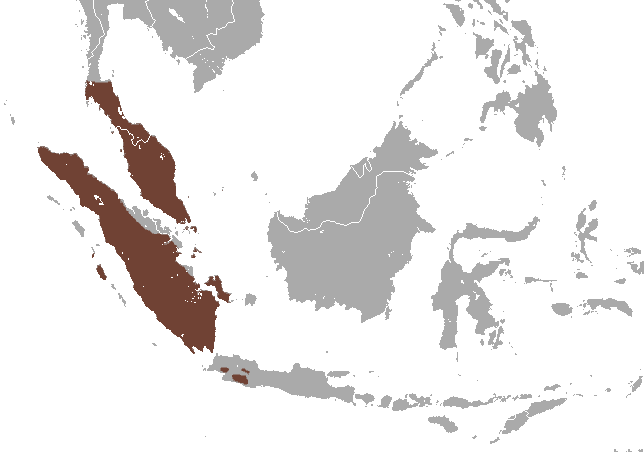
In this gallery:
Northern Treeshrew (Tupaia belangeri)
Common Treeshrew (Tupaia glis)
Horsfield's treeshrew (Tupaia javanica)
Pygmy Treeshrew (Tupaia minor)
Northern Treeshrew (Tupaia belangeri)
The Northern Treeshrew (Tupaia belangeri) is a treeshrew species native to Southeast Asia.
Complete mitochondrial genome data support the hypothesis of a closer phylogenetic relationship of Tupaia to rabbits than to primates. This is however disputed by the more recent full genome sequencing data that places the species closer to primates (divergence ~90.9 million years ago) than to lagomorphs and rodents (~96.4 Million years ago).
The northern treeshrew has attained growing interest for use as a medical model. In 2002, an article was published describing that its primary hepatocytes could be used as a model for studying the Hepatitis C virus, which is a major cause of chronic hepatitis worldwide. It was also used in studies on the development of photo reception, investigation of retinal cones, and refractive state and ocular component dimensions of the eye. Many studies have been conducted regarding eye structure, development, and vision using the northern treeshrew model because of the similarity to human eye structure and sight that is uncharacteristic of conventional small lab animals, such as rodents.
The images below are from various locations in central and northern Thailand:












































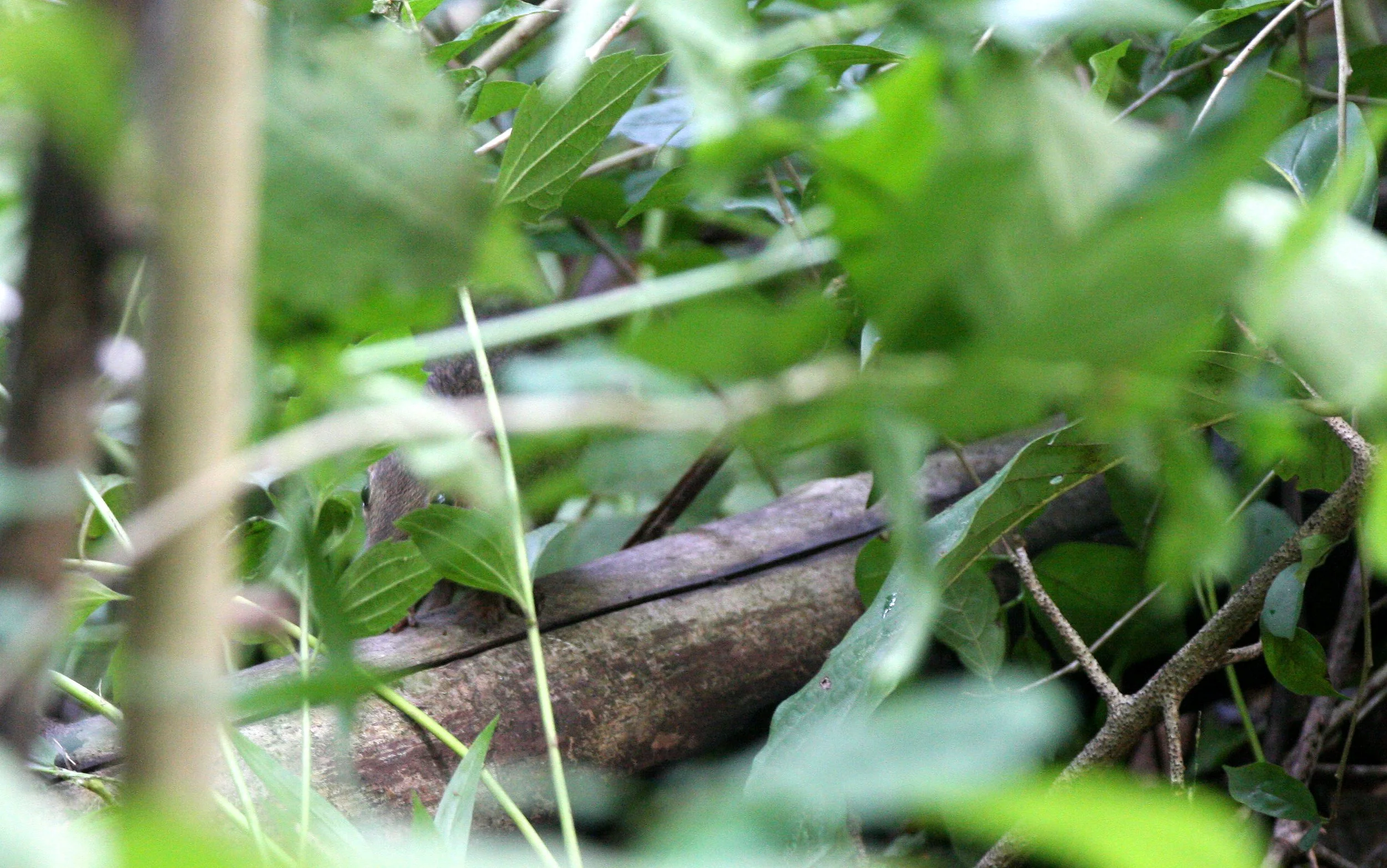


















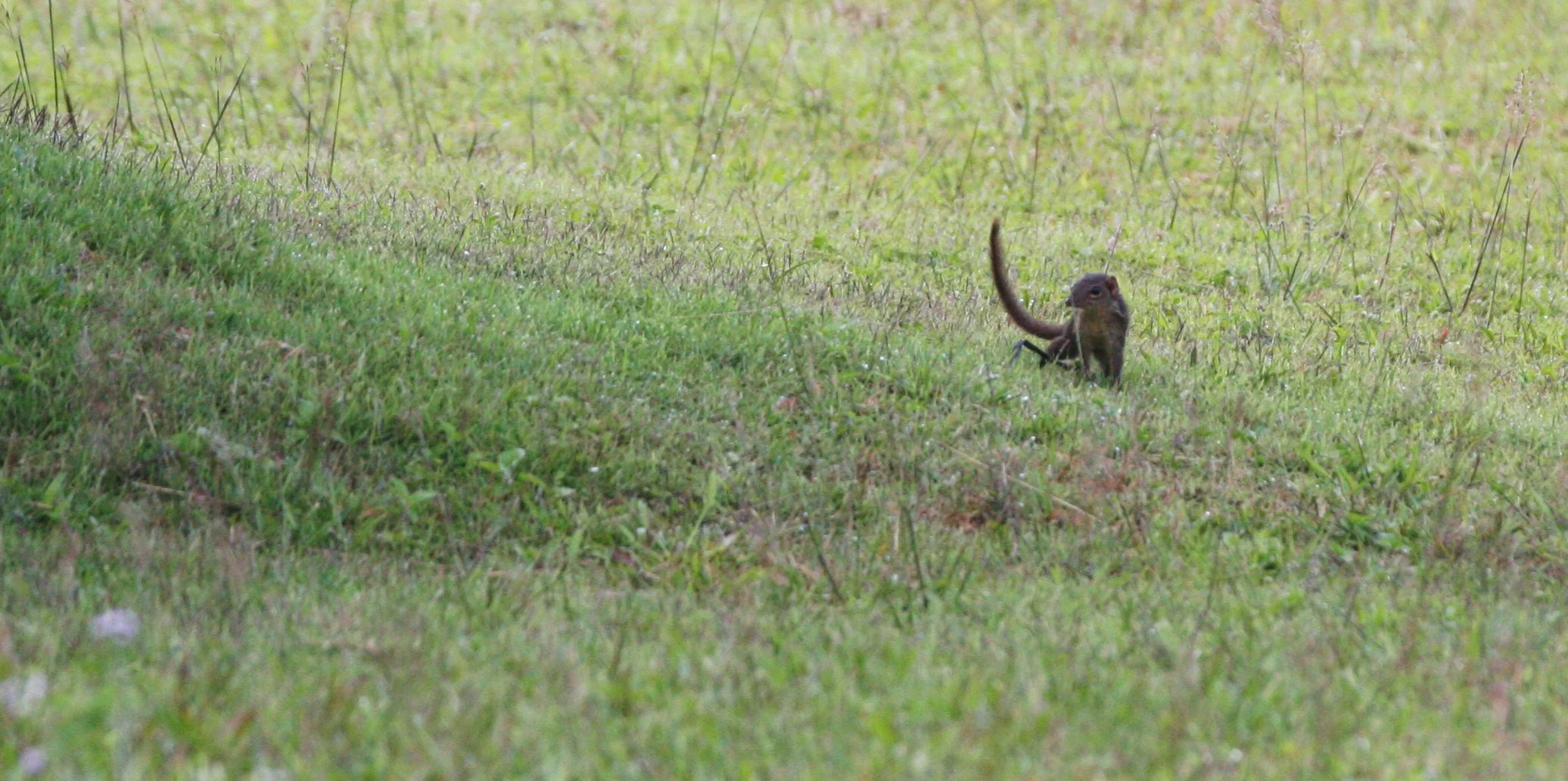










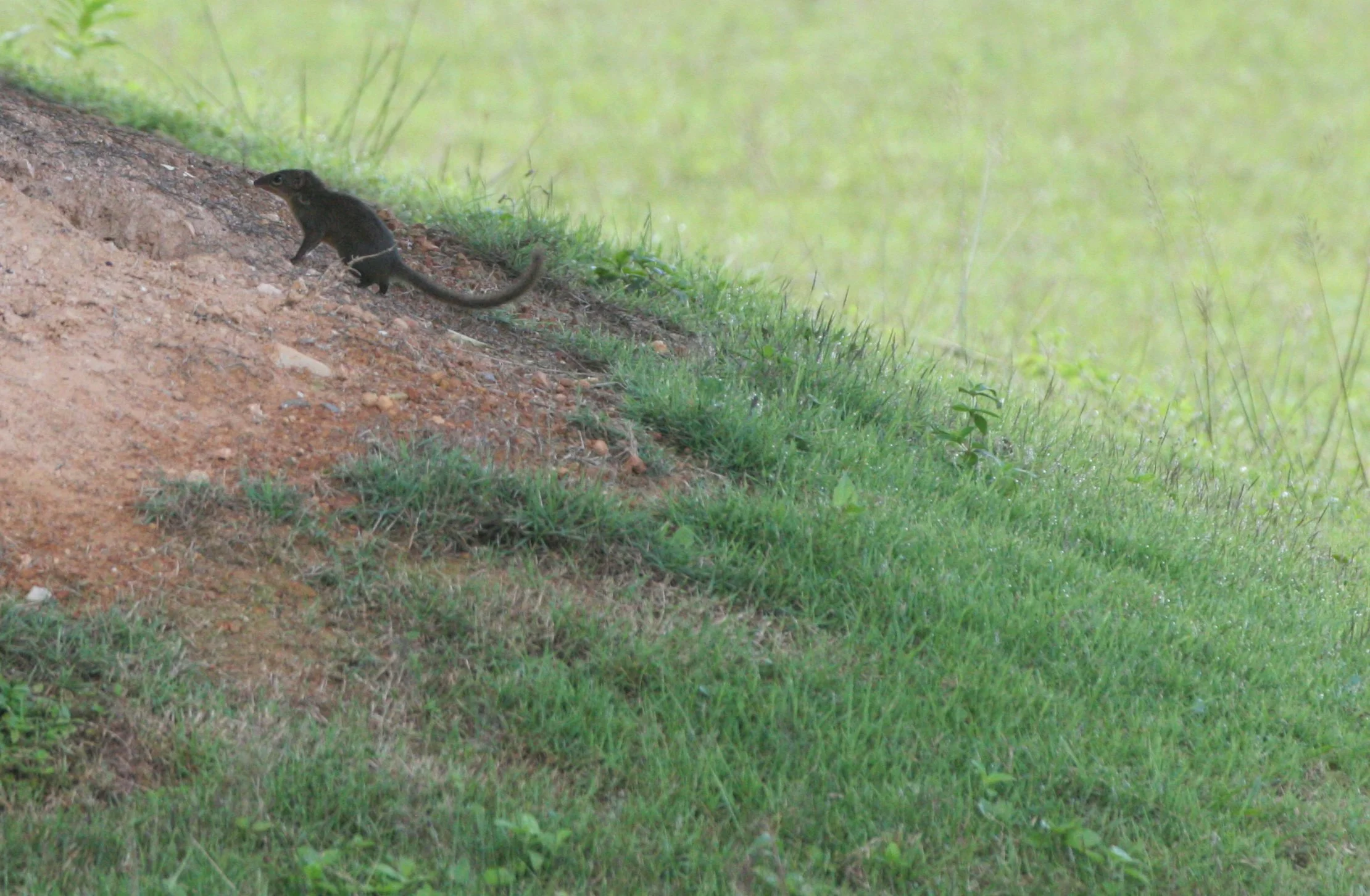


































































Chinese Northern Treeshrew (Tupaia belangeri chinensis) Baima Snow Mountain Yunnan China - massively large individual





Common Treeshrew (Tupaia glis longipes)
The Common Treeshrew (Tupaia glis longipes) is a small mammal in the treeshrew family Tupaiidae, and is native to Thailand, Malaysia, and Indonesia. It has been listed as Least Concern by IUCN as it remains common and displays some adaptability to ongoing habitat loss.
The common treeshrew is one of the largest among treeshrews. Average body length is between 16 and 21 cm (6.3 and 8.3 in), and average weight is around 190 g, with varying colours of reddish-brown, greyish or black upper parts and whitish belly. Its long, bushy tail is dark greyish-brown and almost reaches the length of the body. The paws are bare with sharp nails, and with a naked patch of skin above its long nose. Both sexes are similar. The animal has a head and body length of 13–21 cm and a tail length of 12–20 cm. The common treeshrew usually has a white, pale stripe on each shoulder.
The two subspecies are T. g. longipes and T. g. salatana, with T. g. longipes being duller in color than T. g. salatana. The underparts of T. g. longipes are dull buff to reddish-buff, and the underside of the tail is greyish. The underparts and underside of the tail are dark reddish in T. g. salatana. Similar species are Tupaia splendidula and Tupaia montana.
Common treeshrews occur south of about 10°N latitude in southern Thailand through mainland Malaysia and adjacent coastal islands to Singapore. They inhabit protected areas, including the Pasoh Forest Reserve on the Malay Peninsula and Krau Wildlife Reserve. In Indonesia, they are found on the islands of Siberut, Batu, Sumatra, Java, Bangka, Riau, Lingga and Anambas. Usually they are found in primary dipterocarp forest, but are tolerant to some degree of habitat modification. They have also been recorded from secondary forest, plantations, fruit orchards, and trees near housing areas.
Common treeshrews are probably present throughout the lowlands and hills up to 1,100 m (3,600 ft) in the Kelabit Highlands of Borneo. The subspecies T. g. longipes occurs in the north of Borneo, in Sarawak, and in East Kalimantan, including Sabah. The subspecies T. g. salatana occurs in the south of Rajang River and Kayan River in Borneo.
Common treeshrews are active during the day, and forage for food alone or in pairs, mainly on the ground, among shrubs and tree holes. They feed on fruits, seeds, leaves, and insects, especially ants and spiders. They are also reported to catch lizards.
They are very agile in climbing both large vertical tree trunks and bushes, and occasionally jump from stems of a young tree to that of another as much as 60 cm (24 in) away. Their climbing is concentrated in lower heights. They frequently scent-mark their territories by chest and anogenital rubbing with a secretion from glands on chest and scrotum. Adult males are more secretory than females and juveniles. In the Bukit Timah Nature Reserve, mean home ranges of adult males were estimated at 10,174 m2 (109,510 sq ft), of adult females at 8,809 m2 (94,820 sq ft), of juvenile males at 7,527 m2 (81,020 sq ft), and of juvenile females at 7,255 m2 (78,090 sq ft), with partial overlaps between male and female ranges varying from 0.4% to 56.8%. Home ranges of adult residents of the same sex overlap to a lesser degree than those of opposite sexes. A male's range may include the ranges of two or three females. A high overlap between ranges of one adult male and one adult female indicates they form a stable pair. Juvenile ranges of either sex adjoin or overlap with ranges of adults, suggesting the juveniles are family members. Individuals of the same sex are involved in aggressive territorial chases.
These images are of individuals encountered in Southern Thailand - Koh Lanta, Krung Ching and other locations.



































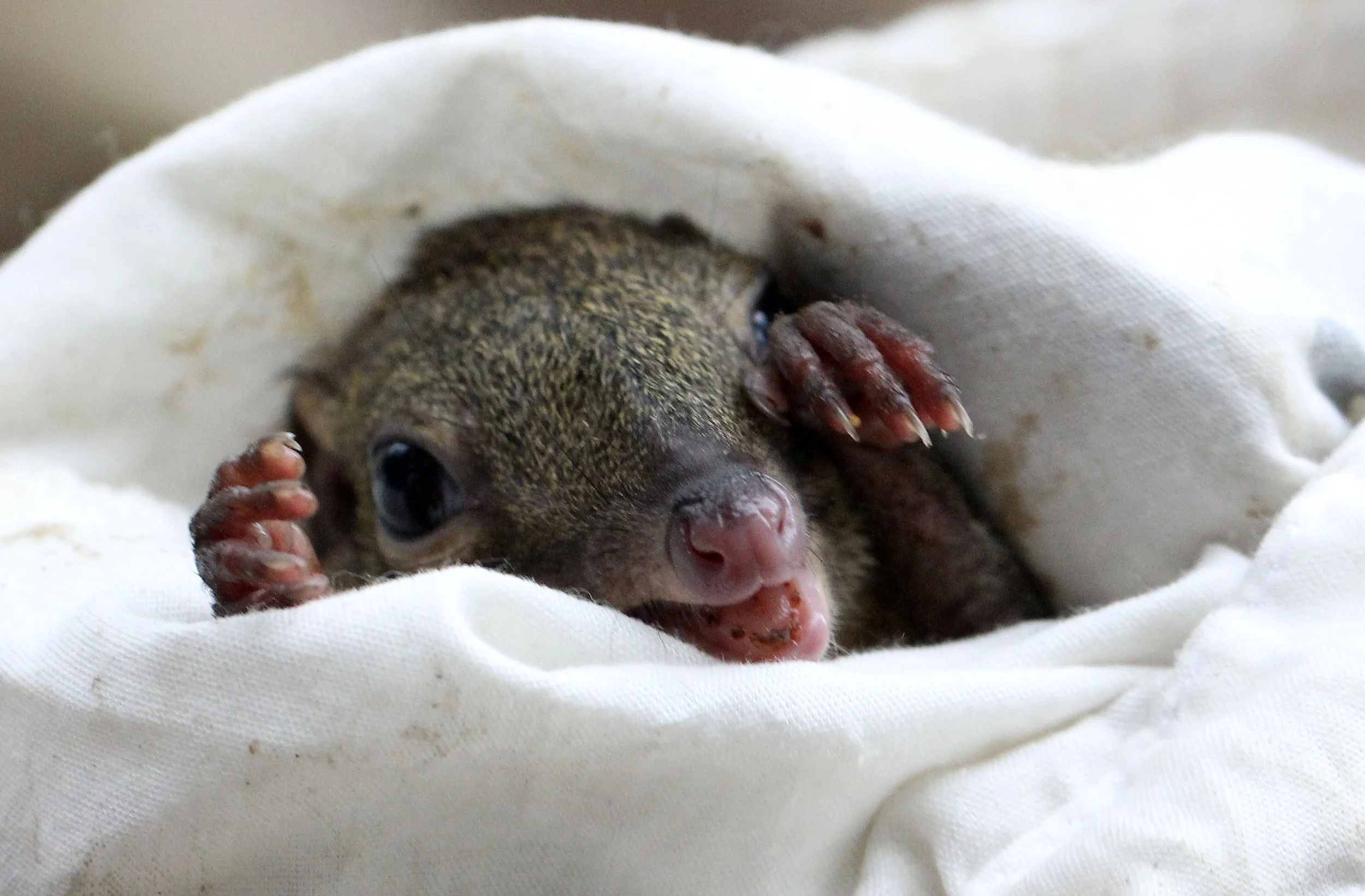



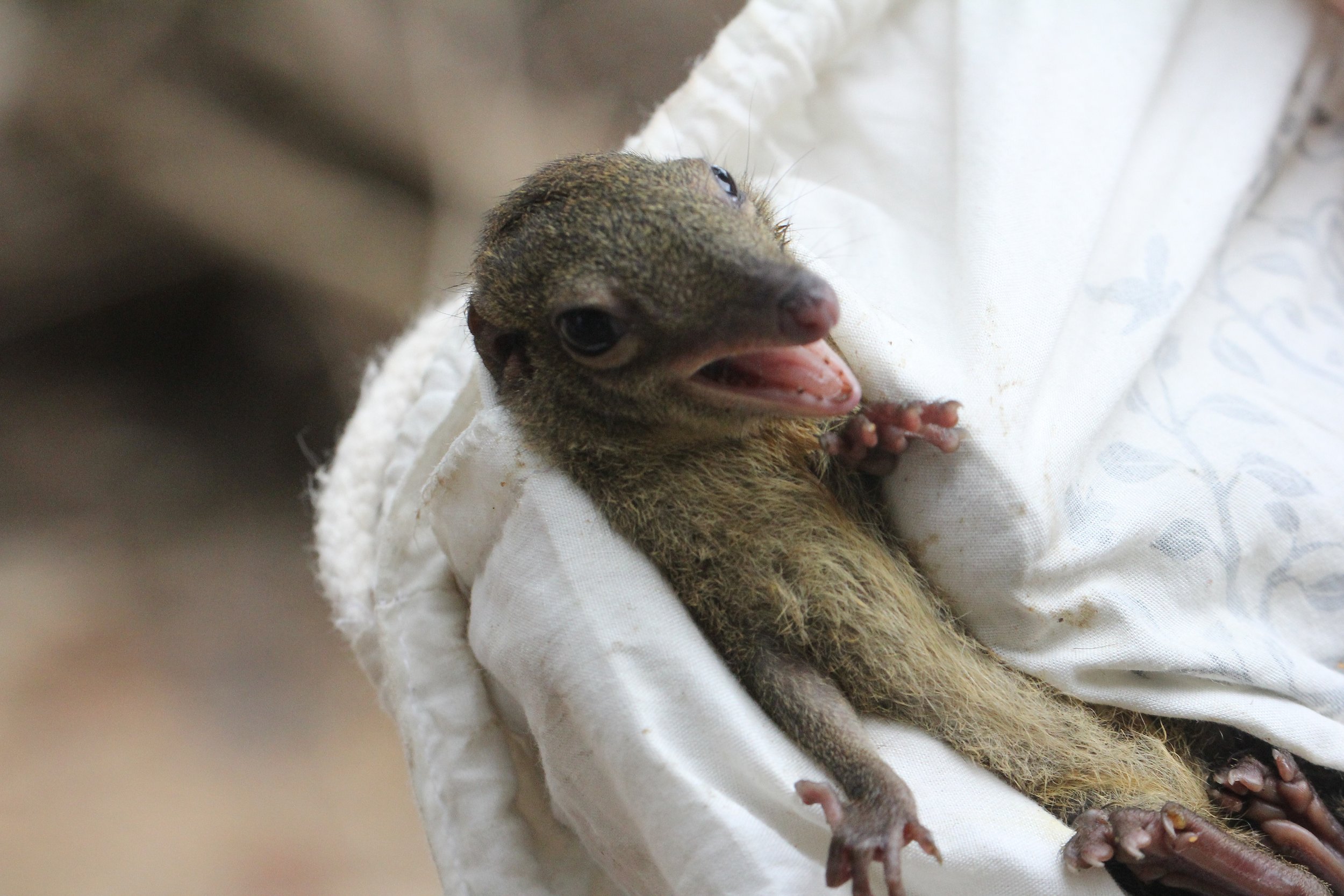





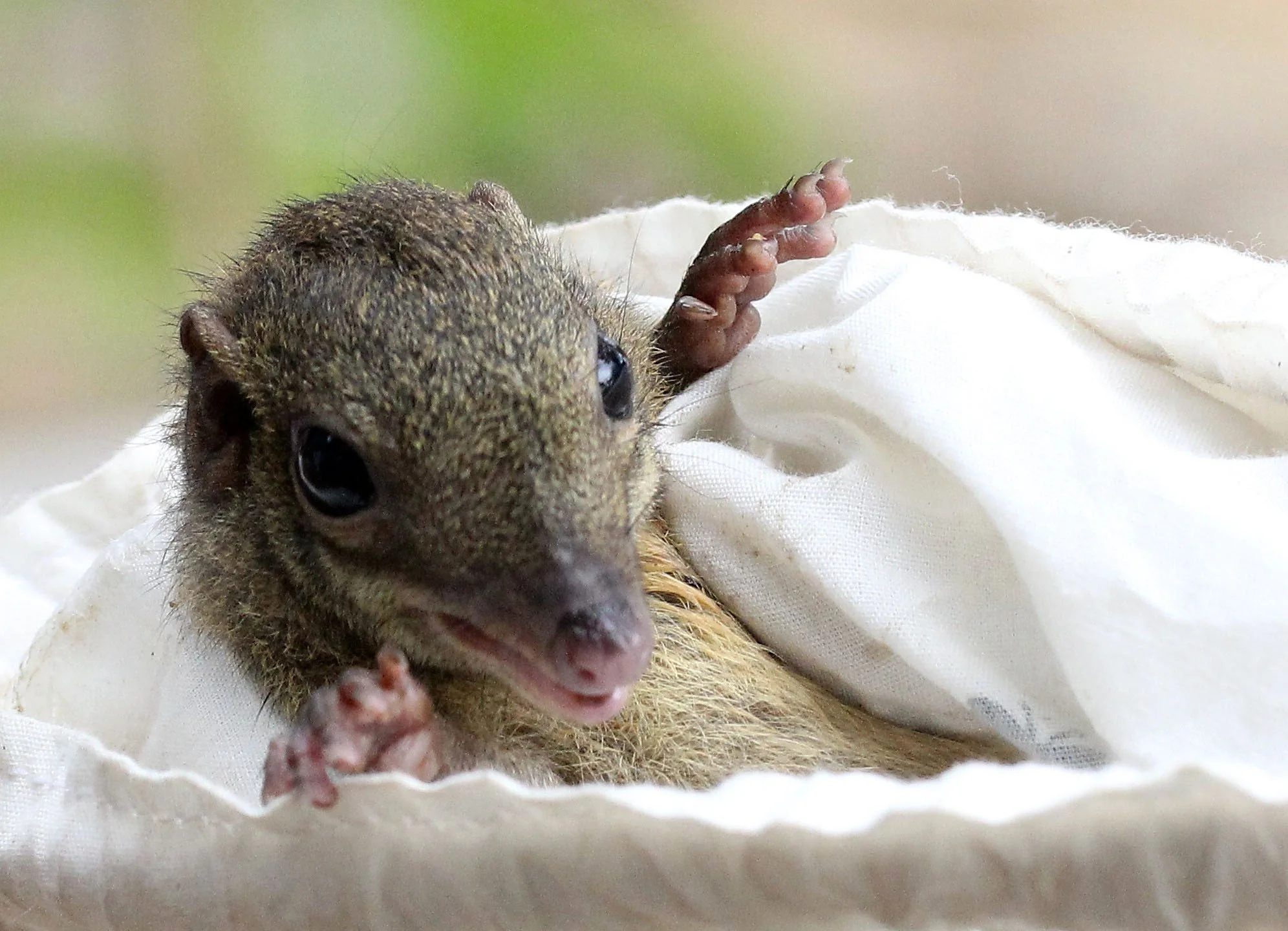


















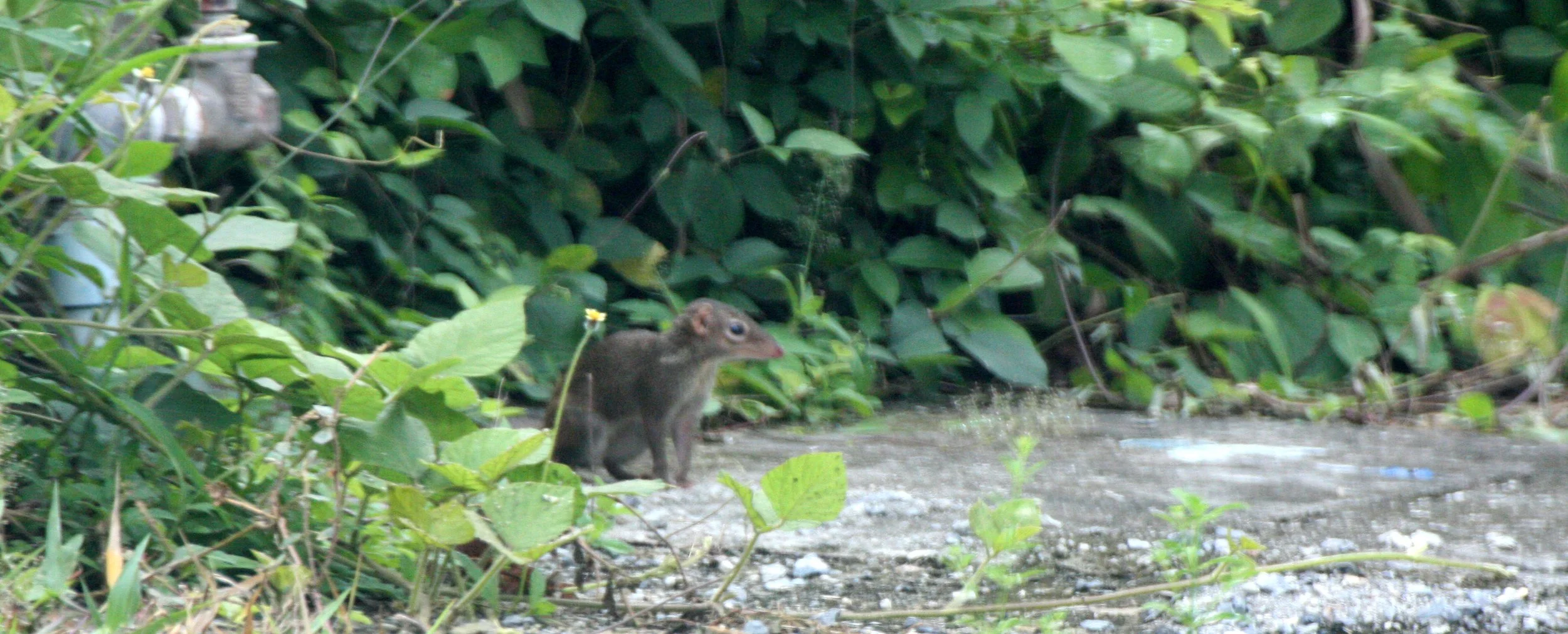
Horsfield's treeshrew (Tupaia javanica)
Horsfield's treeshrew (Tupaia javanica), also called Javan treeshrew, is a treeshrew species within the Tupaiidae. It is endemic to the Indonesian islands of Sumatra, Bali, Java and Nias where it inhabits foremost primary forest.
It was first described by Thomas Horsfield in 1822. Several subspecies have been proposed based on variation in colouration; however, colour is an unreliable distinguishing character.
Tupaia javanica - from Gede National Park Java Barat
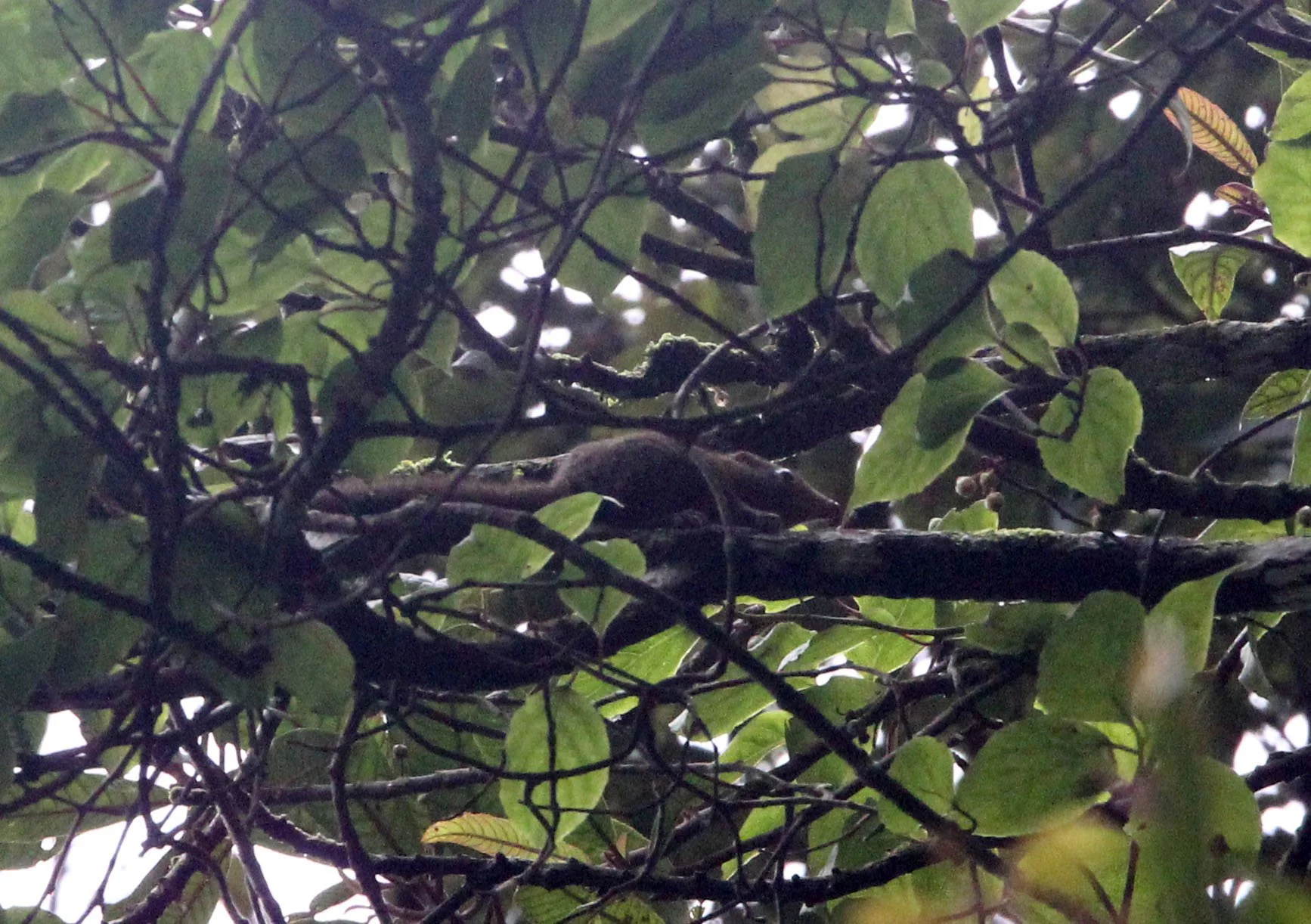
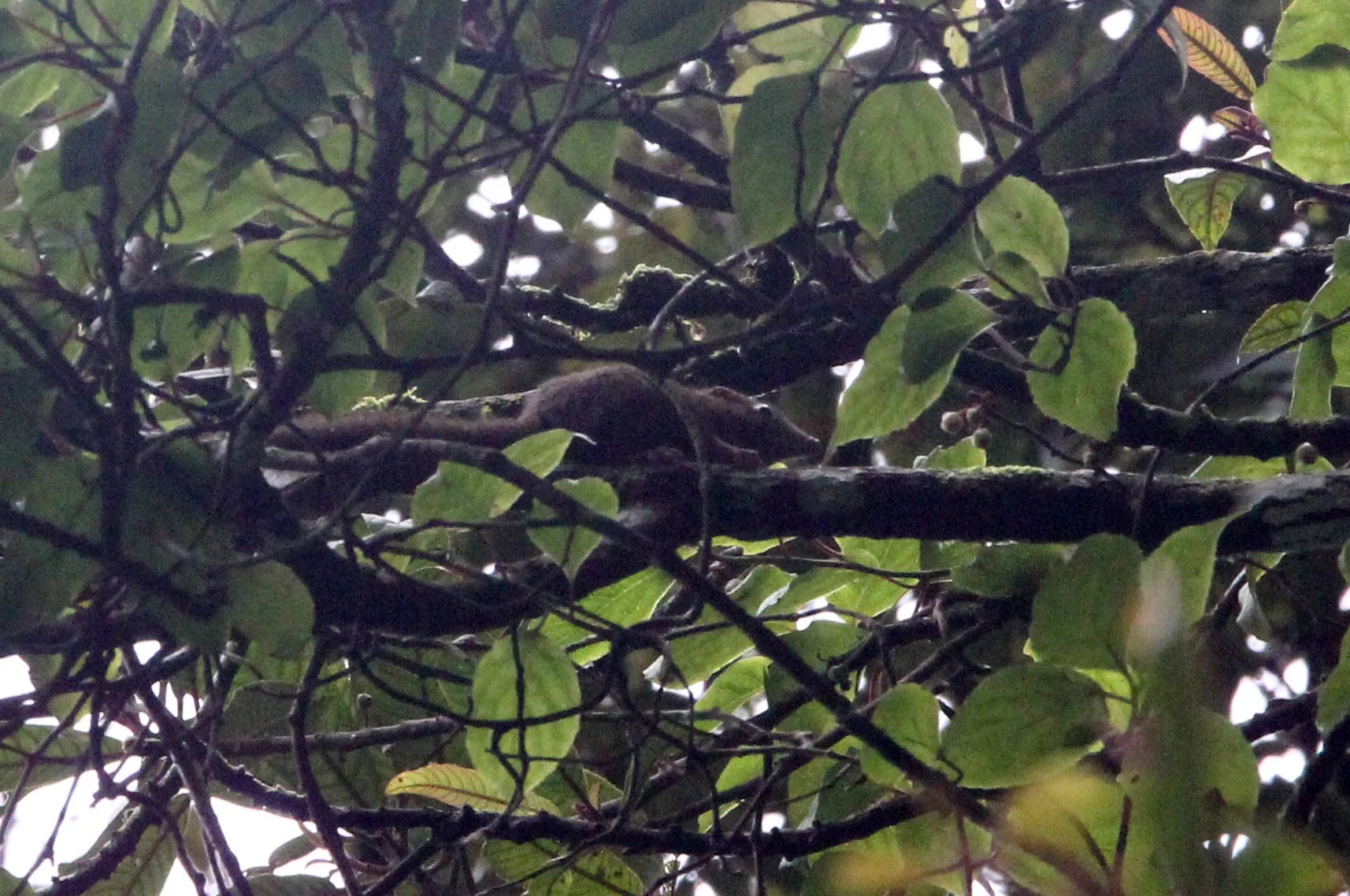


Pygmy Treeshrew (Tupaia minor)
The Pygmy Treeshrew (Tupaia minor) is a treeshrew species within the family Tupaiidae. It is native to Thailand, Malaysia and Indonesia. The generic name is derived from the Malay word tupai meaning squirrel or small animals that resemble squirrels.
Tupaia minor is distributed in peninsular Thailand, peninsular Malaysia, Sumatra, the Lingga Archipelago (Indonesia), Borneo, offshore islands of Laut (Indonesia), and Banggi and Balambangan (Malaysia). From the Catalogue of Mammal Skins in Sarawak Museum, Kuching, Sarawak, more than 30 individuals of T. minor have been collected from 1891 to 1991. The specimens were mostly caught in Mt Penrisen, Mt Dulit, Mt Poi, Gunung Gading, Bau, Ulu Baram, Saribas, Kuching, and Forest Research.
The species has no fossil record.
The pygmy treeshrew's upper body hair is banded light and dark, giving a speckled olive-brown appearance. The upper parts are buffy and often have a reddish tinge towards the rear. The tail is long and thin, and its upper side is darker than the body. The limbs are equal in length and have long claws. The maximum total length is about 450 mm, half of which is the tail.
These individuals come mainly from Tabin Reserve in Malaysian Borneo. The second through fourth images are from Koh Lanta, Thailand.





























